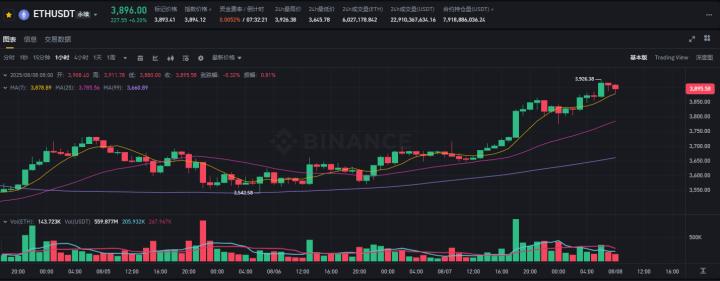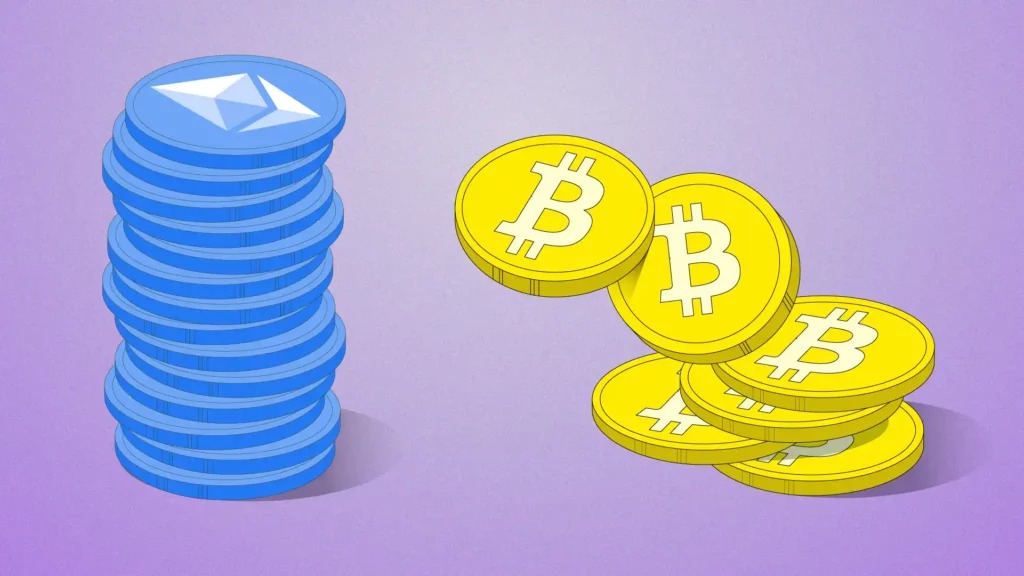Guest: Tom Lee, Chairman of the Board at Bitmine
Podcast Date: August 6, 2025
Editor's Note: Ethereum may be approaching its "sovereign narrative moment". Bitmine has purchased 830,000 ETH in just one month, directly pointing to 1% of global total supply. While most institutions are still waiting and watching, it has become the world's largest ETH treasury company, which is not just a bet on asset prices, but a strategic positioning for the future of financial infrastructure.
This interview with Bitmine's Board Chairman Tom Lee deeply analyzes Bitmine's grand vision and precise execution, discussing Ethereum's key role in financialization, compliant staking, and the AI era. This is not just an insight into digital asset allocation, but also a forward-looking interpretation of a new institutional cycle and financial ecosystem transformation.
The following is the conversation, compiled and translated by ChainCatcher.
Host: Bitmine currently holds 833,000 ETH, nearly 1% of global ETH total supply, becoming the world's largest publicly listed ETH treasury company. How does that feel?
Tom Lee: Indeed, the pace is very fast. From announcing on June 30 to completing on July 8, we quickly acquired a large amount of ETH in 27 days. MicroStrategy has verified the success path of the treasury strategy, with its stock price soaring from $13 in August 2020 to the current level, achieving 30x growth; Bitcoin rose from $11,000 to $120,000, bringing 20x returns from asset appreciation alone.
I believe Ethereum is a major macro trade for the next decade, and we hope to hold as much as possible when ETH price is still around $3,500, to welcome explosive growth similar to Bitcoin's in the past five years.
Host: After Bitmine announced its ETH treasury strategy, other companies like JOE Lubin's SBET and Sharplink Gaming quickly followed, almost simultaneously announcing similar plans. Why did these ETH treasury companies emerge within two weeks?
Tom Lee: Perhaps it's "great minds think alike". Sharpling was the first company to announce the treasury strategy, publicly revealing the plan in May, and we were slightly later.
There are several reasons why Ethereum is suitable for treasury assets:
· First, if you are bullish on ETH's long-term value, the treasury strategy is more attractive than an ETF because you can continuously buy and hold long-term.
· Second, Ethereum is based on Proof of Stake (PoS), which can generate over 3% native yield through staking, essentially providing these companies with a stable income source like infrastructure operators.
· Lastly, scarcity is key. Bitmine's goal is to hold 5% of ETH total supply. We have a very clean balance sheet, with daily stock trading volume reaching $1.6 billion, ranking 42nd in US stock market liquidity, comparable to Uber. Yet our market cap is only $4 billion, far below Uber's $184 billion.
[The translation continues in the same manner for the rest of the text]
Host: You mentioned the turning point of Bitcoin in 2017, how does it compare to the current situation of Ethereum?
Tom Lee: In 2017, our research at Fundstrat found that Bitcoin's price rise from $100 to $1,000 was mainly driven by wallet numbers and activity, demonstrating a strong network effect. At that time, institutions were barely involved, we were questioned and even lost clients, but ultimately Bitcoin rose to $120,000.
Today's Ethereum is in a similar situation: many Wall Street professionals still have doubts, questioning whether it is the "main chain". But the reality is that Ethereum has been running without downtime for 10 consecutive years, with on-chain activity reaching a historical high. Circle's IPO, Coinbase and Robinhood's Layer 2 solutions are all built on Ethereum.
Wall Street is beginning to realize that Ethereum is becoming the core infrastructure for financialization and tokenization.
Host: What is your view on ETH's price this year or in this cycle?
Tom Lee: In the short term, ETH should at least return to $4,000 from last December. Based on the ETH/BTC ratio of 0.05 at that time, with the current Bitcoin price, ETH should be around $6,000. Considering factors like continued purchases by treasury companies and potential Fed rate cuts, ETH has a chance to reach between $7,000 and $15,000 by the end of the year.
In the long term, Bitcoin has achieved a hundredfold growth. As a core asset in the era of financialization and AI, ETH's future potential might be even greater, with a chance to surpass Bitcoin.
Host: How to value ETH? Based on transaction fees, DeFi storage value, or staking demand?
Tom Lee: It's difficult to precisely predict ETH's reasonable price using a spreadsheet, just like you can't accurately predict Bitcoin or S&P 500's long-term trend. Market pricing reflects more the expectations for the next 5 to 10 years, rather than current transaction data.
ETH is currently severely undervalued. While comparing Bitcoin to "digital gold" and Ethereum to "digital oil" has some reference value, we shouldn't be constrained by these models.
Host: Will ETH treasury companies overheat? Is there a risk of a bubble burst like investment trusts in the 1920s or GBTC?
Tom Lee: A bubble requires market-wide optimism, but currently, both ETH and Bitcoin have cautious or even pessimistic mainstream sentiment. Treasury companies won't bring systemic risks as long as they don't abuse leverage, especially with compliant debt structures like MicroStrategy's.
At the current stage, the market is more "over-suspicious" than "over-optimistic", which is precisely the soil for price increases.
Host: What are you concerned about in the macroeconomic aspect?
Tom Lee: I'm concerned about the politicization of institutions, especially the questioned independence of the Federal Reserve and Bureau of Labor Statistics (BLS). However, the overall economy is actually strong, despite many institutional clients mistakenly believing we're in a recession.
In the past 30 years, no one could accurately predict a recession. Now, companies are generally cautious, with the ISM index below 50 for 29 consecutive months. Similar to a "tariff impact" resetting market confidence, this helps suppress overheating. I believe we're still in the middle, or even early, of the economic cycle.
Host: What is Wall Street's biggest misunderstanding about Ethereum?
Tom Lee: They rely too much on spreadsheets, focusing on details like Gas fees and stablecoin trading volumes, resulting in "analysis paralysis".
The real issue isn't what the model says, but the lack of strategic perspective. Ethereum's value as a compliant blockchain is becoming increasingly important, like the once-underestimated S&P 500. It will become the infrastructure for the era of financialization and AI, and the current market price is far below its true potential.
Click to learn about BlockBeats job openings
Welcome to join BlockBeats official community:
Telegram Subscription Group: https://t.me/theblockbeats
Telegram Communication Group: https://t.me/BlockBeats_App
Twitter Official Account: https://twitter.com/BlockBeatsAsia







